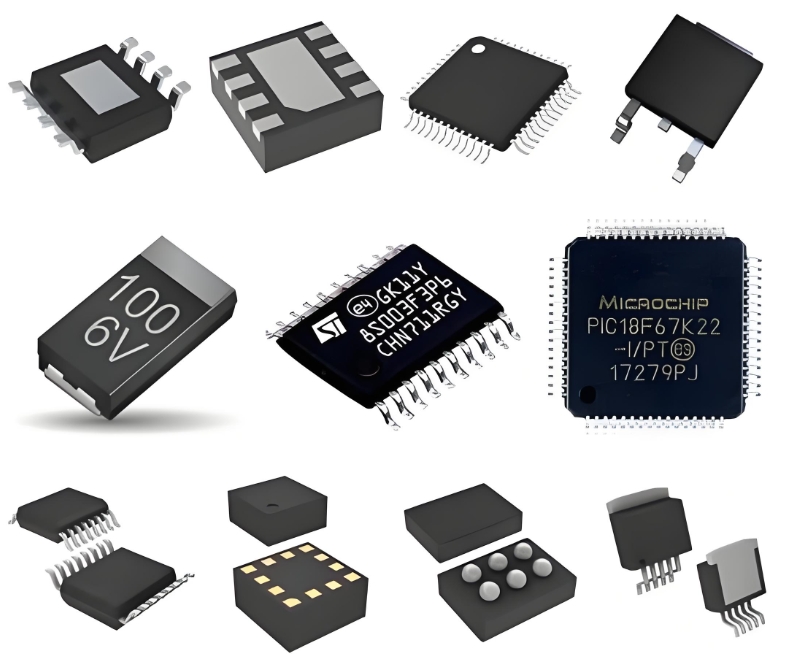**The AD654JNZ: A Comprehensive Guide to the Monolithic Voltage-to-Frequency Converter**
In the realm of analog-to-digital signal conversion, the voltage-to-frequency converter (VFC) stands as a uniquely versatile and robust solution. Among these devices, the **AD654JNZ from Analog Devices** has established itself as a quintessential monolithic integrated circuit, renowned for its simplicity, accuracy, and reliability. This comprehensive guide delves into the architecture, operation, and practical application of this enduring component.
**Understanding the Voltage-to-Frequency Converter Principle**
At its core, a VFC is a special type of oscillator whose output frequency is precisely proportional to an applied input voltage. This linear relationship, expressed as `Fout = K * Vin`, where `K` is the conversion gain, transforms a voltage signal into a train of digital pulses. This pulse train can be easily transmitted, optically isolated, or counted by a simple microcontroller, making VFCs ideal for noise-immune data acquisition in electrically harsh environments.
**Inside the AD654JNZ: Architecture and Key Features**
The AD654JNZ is a monolithic VFC designed to operate with a single supply voltage from +5V to +36V. Its architecture is elegantly simple, centered around a **high-input-impedance operational amplifier**, a precision oscillator circuit, and an open-collector output transistor.
Key specifications that have cemented its popularity include:
* **Wide Operating Range:** It accepts input voltages from 0V to just under the positive supply voltage (Vs - 4V).
* **Excellent Linearity:** It boasts a typical non-linearity error of only **0.03% at 10kHz** and 0.1% at 100kHz, ensuring highly accurate conversions.
* **Versatile Frequency Scaling:** The full-scale output frequency is set by a single external capacitor and resistor, allowing it to be easily configured for frequencies from 1Hz to 500kHz.
* **Low Power Consumption:** Typically drawing only 2.0mA of supply current, it is suitable for low-power and portable applications.
* **Robust Monolithic Design:** Housed in an 8-pin DIP or SOIC package, the AD654JNZ integrates all necessary components for a complete VFC on a single chip, enhancing reliability and simplifying board design.

**How to Configure and Use the AD654JNZ**
Implementing the AD654JNZ is remarkably straightforward. The input voltage is applied to the non-inverting input of the internal op-amp (Pin 4). The full-scale output frequency (`Fmax`) is determined by the external timing capacitor (`C1`) and a current-set resistor (`R2`), following the approximate formula:
**`Fmax (Hz) ≈ 1 / (10 * R2 * C1)`**
A resistor (`R1`) is typically used to scale the input voltage to the device's internal 1mA full-scale current. The open-collector output (Pin 1) requires a pull-up resistor to the desired logic voltage (e.g., +5V for TTL/CMOS compatibility).
**Common Applications and Circuit Examples**
The AD654JNZ's unique attributes make it a go-to solution for numerous engineering challenges:
1. **Analog-to-Digital Conversion:** By connecting the output pulse train to the interrupt or counter pin of a microcontroller, a low-cost, high-resolution digital voltmeter or data logger can be created.
2. **Noise-Immune Signal Transmission:** The frequency output can be sent over long cables or through **opto-isolators and fiber-optic links** with high immunity to noise and ground loops, perfect for industrial sensor interfaces (e.g., thermocouples, pressure transducers).
3. **Precision Frequency Generation:** It can be used to create a linear voltage-controlled oscillator (VCO) for function generators and phase-locked loops (PLLs).
4. **Integrating Analog Functions:** It naturally performs integration of the input signal over time, useful in applications like dual-slope analog-to-digital converters.
**ICGOODFIND**
The AD654JNZ remains a timeless and highly effective solution for converting analog signals into a digital frequency domain. Its **unmatched simplicity, robust performance, and versatility** ensure it continues to be a valuable component in the toolbox of engineers designing for measurement, isolation, and control systems, even in the modern digital age.
**Keywords:** Voltage-to-Frequency Converter, Monolithic IC, Analog-to-Digital Conversion, Signal Isolation, Linear Oscillator
